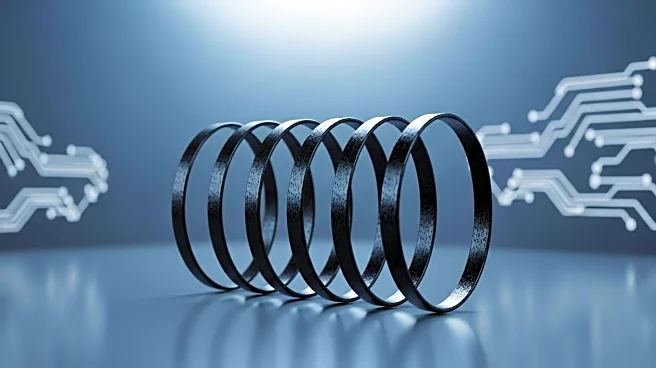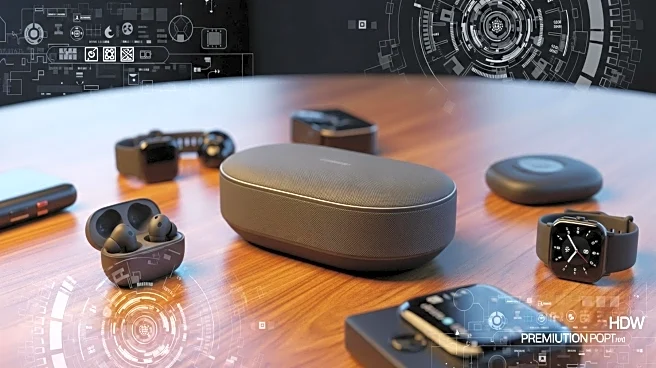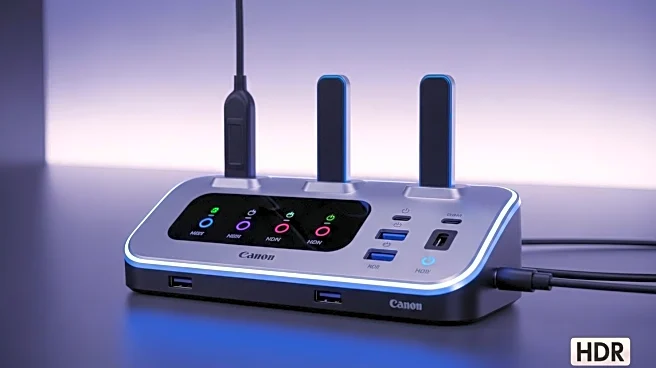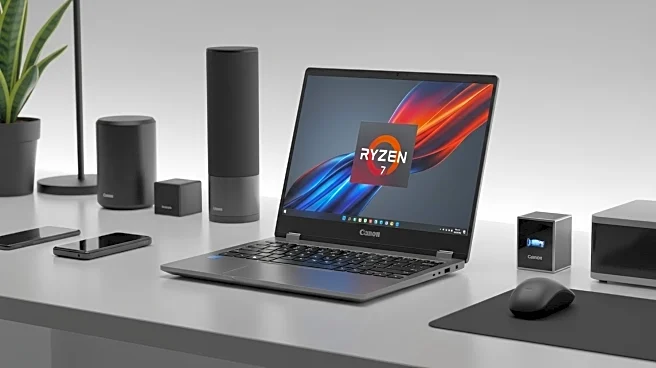What is the story about?
What's Happening?
Researchers have developed black phosphorus nanoribbons (BPNRs) that exhibit tunable bandgaps and unique electronic and optical properties, making them strong contenders for logic devices in integrated circuits. These BPNRs outperform their two-dimensional counterpart, 2D black phosphorus, which is challenging to synthesize in a suitable form for logic applications. The team demonstrated a graphene-contacted BPNR field-effect transistor (FET) with record-high performance metrics, including an on/off ratio of 1.7 × 106, mobility of 1,506 cm2 V−1 s−1, and an on-state channel conductivity of 1,845 µS. This performance substantially surpasses that of gold-contacted FETs with the same BPNR dimensions and all previously reported counterparts.
Why It's Important?
The development of BPNRs is significant as it addresses the demand for materials with suitable bandgaps and high carrier mobility at reduced dimensions, crucial for miniaturizing field-effect transistors in the post-Moore era. This advancement could lead to more efficient and powerful integrated circuits, impacting industries reliant on semiconductor technology. The superior performance of BPNRs could drive innovation in electronics, potentially leading to faster and more energy-efficient devices, benefiting both manufacturers and consumers.
AI Generated Content
Do you find this article useful?













